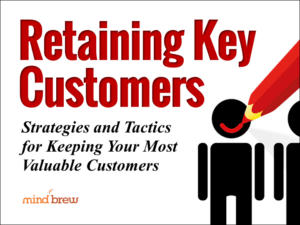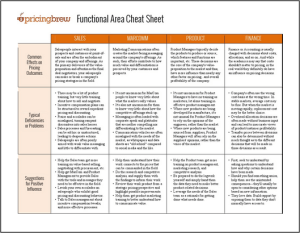Through the Help Desk feature of the PricingBrew Journal, a number of subscribers have asked our team to weigh-in on certain pricing issues that are generating a lot of internal disagreements and differences of opinion as to how best to proceed. One of the more common points of disagreement is around the desire for “simple pricing”.
On one side of the argument, Sales and/or Marketing people will often argue that pricing needs to be simple. Otherwise, they claim, salespeople and customers will get confused and frustrated. Deals will slow to a crawl. And sales will be lost to competitors who are more responsive and easier to do business with.
On the other side of the argument, Pricing people argue that pricing needs to reflect the complexity of the marketplace. Otherwise, they say, profit will be left on the table with customers who are willing to pay more. Sales will be lost with customers who are being over-priced. And share prices will plummet as profitability takes a nosedive.
While we’d like nothing more than to side with our colleagues in Pricing, we have to be honest and explain how both parties are absolutely right…and dead wrong.
How can they both be right…and wrong…at the same time? Well, the parties involved are arguing about pricing as though it’s just one, mutually-exclusive “thing” that can either be simple or complex. But they are actually talking about two different aspects of pricing:
- The Underlying Pricing Model
Here, the Pricing people are right and the Sales/Marketing people are wrong. Complex pricing models that are able to describe all of the various differences in price sensitivity and willingness-to-pay that actually exist in the marketplace are crucial for maximizing revenue and profit performance. - The Price Execution System
Here, it’s the Sales/Marketing people who are right and the Pricing people who are wrong. Expecting customers and salespeople to make sense of an incredibly complex pricing model is a recipe for disaster. In the field, pricing does indeed need to be simple to ensure proper and consistent execution.
So…how do you reconcile these seemingly incongruent concepts? How can you have a complex pricing model that’s simple to execute in the field?
Many companies are achieving this combination through the use of technology. For example, price look-up tools are very simple from an execution standpoint. Salespeople can simply enter or select the details of the quote—customer, product, quantities, timing, etc.—and the tool will then display the recommended prices. The underlying model that’s determining those prices can be extremely complex, using dozens of different variables and containing thousands of discrete segments. Yet, the salespeople are effectively shielded from all of that complexity.
I’m no expert, but I think that’s called a “win win” solution 🙂















